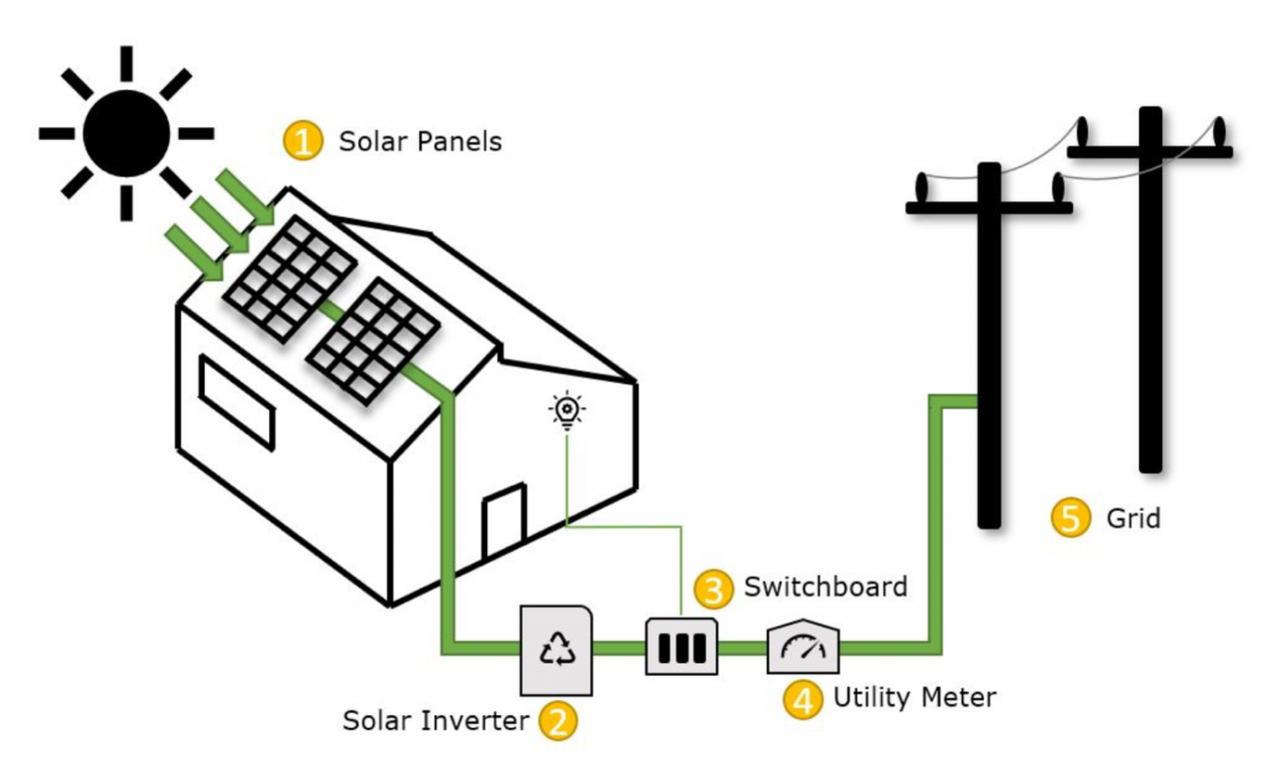Solar 101 – Keeping it simple
Solar 101 – Keeping it simple
Great, you’re interested in solar energy. Let’s decode some of the jargon and really understand what each part does in plain language.
First, you’ve got your solar panels. They’re like the “fishermen” that capture the sun’s energy. They can’t use it as is; it’s like catching fish but not yet cooking it.
This is where the inverter comes into play. Consider it your kitchen. It takes the raw, DC (Direct Current) electricity from the panels and converts it to AC (Alternating Current) electricity, which is what everything in your house runs on.
Sometimes you produce more energy than you consume. In that case, net metering allows you to send this surplus energy back to the grid in exchange for a feed in tariff. Feed-in tariffs, are rates at which you sell your extra electricity back to the grid. Think of this like a savings account where you get credits for depositing extra energy. These credits can offset your energy costs when your solar system isn’t producing enough, like during night-time or cloudy days.
Some people also invest in battery storage to store extra energy. This is essentially your energy “piggy bank,” allowing you to store energy for those days when the sun isn’t shining.
Still concerned about the costs? The government offers solar rebates to make going solar more affordable. A rebate is like a discount coupon that lowers your upfront costs.
If you’re looking to measure how much energy you’re using, kilowatt-hour (kWh) is the unit you’ll see on your solar monitoring. This is the standard “currency” of energy, like dollars are for shopping.
Lastly, let’s talk about your connection to the larger electrical network, or grid. A grid-connected system is like being part of a big energy community. You can pull from it when you need to and give back when you have extra. If you’d rather not depend on this community, an off-grid system with battery storage can make you entirely self-sufficient.
In essence, solar energy is about capturing free energy from the sun, converting it into a form you can use, and managing it efficiently to save money and protect the planet. With terms like sustainability and energy independence often thrown around, the underlying goal is to create a more eco-friendly and self-reliant way of powering our lives.
That’s solar energy in a nutshell—capturing sunlight and turning it into cost-effective, sustainable power for your home.

